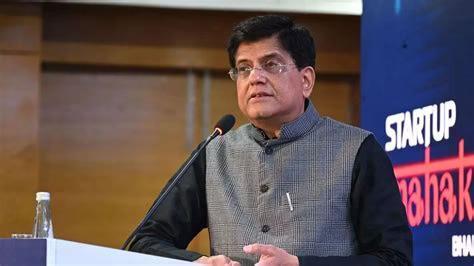
Indian Brands Go Global: Competing on Design & Quality
The Indian economy has undergone a significant transformation over the past few decades. Gone are the days when Indian brands were content with just attracting foreign brands to the country. Today, Indian brands are aggressively expanding globally, competing with the best in the world on parameters of design, quality, and innovation.
This shift in perception and strategy has enabled Indian companies to establish themselves as serious global contenders in various industries, from consumer goods to technology. According to Dheeraj Sinha, CEO of FCB India, “Indian brands are winning globally on design, quality, and competitiveness.” In an interview with The Core, Sinha attributed this success to the country’s strong manufacturing capabilities, strategic marketing, and a growing appetite for innovation.
From Domestic to Global
Historically, Indian brands focused on catering to the domestic market, with limited international presence. However, over the past few years, there has been a significant push to go global. Companies like HUL, ITC, and Tata Group have been at the forefront of this movement, expanding their footprint in international markets.
One of the key drivers of this growth has been the country’s manufacturing sector. Indian companies have invested heavily in upgrading their manufacturing capabilities, which has enabled them to produce high-quality products that can compete with international brands. Additionally, the government’s initiatives, such as Make in India, have provided a fillip to the sector, making it easier for companies to scale up their operations.
Design and Quality
Design and quality are two critical parameters that have enabled Indian brands to gain traction globally. Companies like Hindustan Unilever Limited (HUL) and ITC have invested heavily in design and innovation, creating products that are not only high-quality but also aesthetically pleasing.
For instance, HUL’s Axe brand has become a global phenomenon, with its unique packaging and marketing strategy resonating with consumers worldwide. Similarly, ITC’s Chai and other food brands have gained a significant following globally, thanks to their unique taste and packaging.
Technology and Innovation
Technology has also played a crucial role in Indian brands’ global success. Companies like Flipkart, Paytm, and Ola have disrupted traditional industries, offering innovative solutions that have resonated with consumers worldwide.
Flipkart, for instance, has become one of the largest e-commerce platforms in the world, offering a wide range of products at competitive prices. Paytm, another Indian fintech giant, has enabled millions of users to make payments online, leveraging its vast network of merchants and users.
Marketing and Branding
Marketing and branding have also been critical to Indian brands’ global success. Companies like FCB India, Ogilvy, and Wipro have played a significant role in creating campaigns that resonate with global audiences.
FCB India’s campaigns for brands like HUL and ITC have been highly successful, leveraging social media and other digital platforms to connect with consumers worldwide. Ogilvy’s work for clients like Coca-Cola and Unilever has also been highly acclaimed, showcasing the agency’s expertise in creating effective marketing campaigns.
Challenges Ahead
While Indian brands have made significant progress in going global, there are still several challenges that need to be addressed. One of the key challenges is the perception of Indian brands as being “low-cost” or “low-quality.” This perception needs to be changed, and Indian brands need to focus on creating products and services that are perceived as high-quality and innovative.
Another challenge is the need for Indian brands to adapt to local markets and consumer preferences. Companies need to invest in market research and understanding local consumer behavior to create products and services that resonate with them.
Conclusion
In conclusion, Indian brands are making significant progress in going global, competing with the best in the world on parameters of design, quality, and innovation. Companies like HUL, ITC, and Tata Group have been at the forefront of this movement, leveraging India’s strong manufacturing capabilities, strategic marketing, and a growing appetite for innovation.
As Indian brands continue to expand globally, they need to focus on creating high-quality products and services that resonate with consumers worldwide. With the right strategy and execution, Indian brands have the potential to become global leaders in various industries, creating a new era of Indian entrepreneurship and innovation.
Source:






